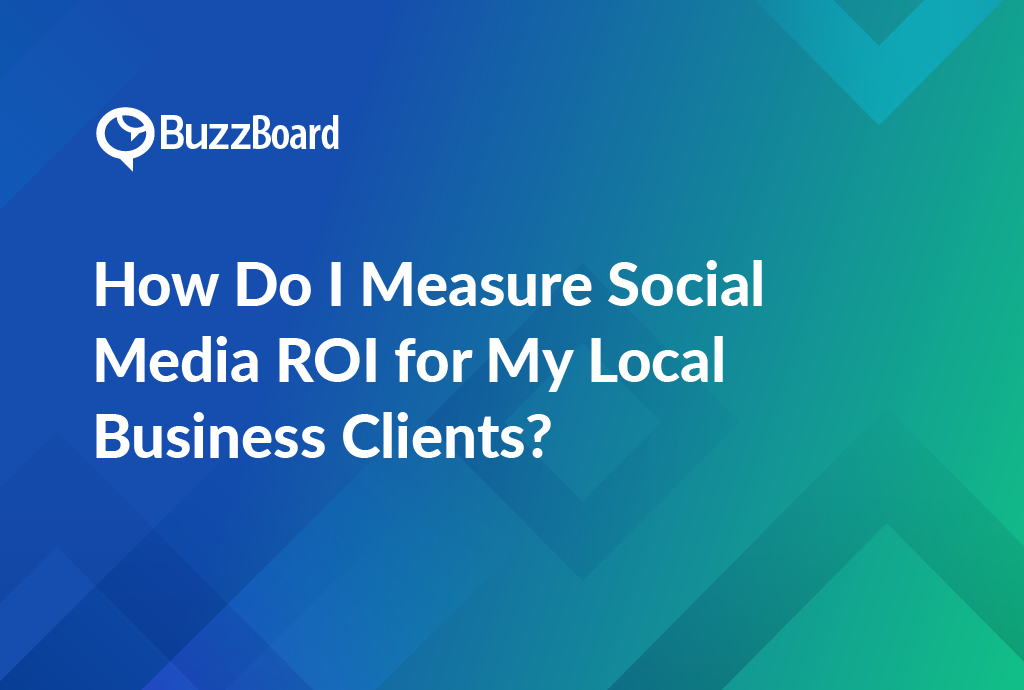Understanding the Importance of Measuring Social Media ROI for Local Businesses
Understanding the importance of measuring social media ROI for your local business clients is pivotal in today’s digital era, where almost every decision can depend on this crucial data. Precise and effective ROI measurement can expose a wealth of insights that can propel your clients’ local business sales.
Social media ROI essentially charts the return on investment from the time, money, and resources a local business pours into social media marketing. To measure social media ROI correctly, you should contrast the cost invested in the social media strategy against the revenue produced by that strategy.
Assessing social media ROI also aids in scrutinizing sales impact. An exhaustive ROI analysis not only ascertains if the social media campaign boosted sales but also discerns which aspects were most successful and which could be enhanced for superior results. This traffic and engagement data is essentially a review of past actions that can shape successful future strategies.
As salespeople eager to escalate local business sales, understanding the best practices for measuring social media ROI is crucial. This encompasses establishing measurable goals, monitoring the right metrics, studying the data, and implementing adjustments based on those discoveries. Repeatedly performing this will dramatically assist your clients’ social media strategy.
So if you’re a salesperson at a digital marketing agency aiming to offer exceptional results for your small and local business clients, measuring and grasping social media ROI should be an integral part of your strategy.
Best Practices on How to Measure Social Media ROI for Local Business Clients
When offering digital marketing solutions to small, local businesses, many often wonder: “How can I quantify the social media ROI for my clients?” Understanding how to effectively calculate the return on social media investments is crucial for digital marketers, as it directly correlates to the impact of these campaigns on local business sales.
The first step in analyzing social media ROI is to establish measurable goals that align with the objectives of your clients’ businesses. Whether the aim is to boost brand recognition, stimulate conversions, or another key metric, setting these goals that align with Key Performance Indicators (KPIs) allows for accurate, ongoing appraisals of a campaign’s success.
It’s then important to monitor these metrics employing appropriate analytics tools that gauge engagement, the growth of followers, and conversion rates. It’s recommended to use resources like Google Analytics and Facebook Insights to collect and scrutinize the data. Improve your tracking strategy by integrating UTM parameters into your social media posts. This way, you can keep tabs on traffic sources and the triumph of various campaigns.
Additionally, continually monitoring the ROI from varying social media platforms can assist in discerning what strategies are effective and which are not. This insight enables the adjustment of budgets and resources to achieve the best possible outcomes.
Sophisticated sales teams at digital marketing agencies understand that social media ROI isn’t just about the advertising expenditure but also the time, effort, and resources that go into the creation, management, and evaluation of these campaigns.
Linking Social Media Efforts with Local Business Sales: The Role of ROI Measurement
Understanding and measuring the relationship between social media efforts and local business sales is crucial in today’s digital marketplace. Previously dominated by traditional advertising methods, social media now provides a way for small and local businesses to directly reach their target market in a quantifiable manner.
The key to unlocking this potential lies in the ability to measure social media return on investment (ROI.) The measurement of ROI is a central factor in refining marketing efforts and exposing the true impact of social media on sales.
ROI analysis starts with sorting the wealth of available social media data into meaningful and comparable metrics that can be tied to sales. These metrics may include follower growth, engagement rates, website visits, and conversions. Converting these into comparable data will reveal the social media ROI.
Local businesses can adopt several best practices to enhance their social media ROI measurements. Engage the audience through local-specific content and reach out to potential customers within the community. Always test and optimize your social media strategy. Monitor key performance indicators periodically and take timely and effective steps to boost ROI.
Identifying exact interactions that lead to sales can be challenging but with the right platform and patience, it’s achievable. Tools like Google Analytics and social media analytic tools can offer deeper insights, aiding in the delivery of marketing efforts to the right audience at the right time.
The benefits of accurately measuring ROI go beyond comprehending the impact of social media on sales. It can offer valuable insights into customer behavior, preferences, and trends. This information can be leveraged to drive more sales, customer loyalty, and, ultimately, business growth.
Effective ROI Analysis Measuring the Sales Impact of Social Media
In today’s digital realm, quantifying the sales impact of social media is vital, particularly for local businesses. For digital marketing agencies, understanding how to measure social media return on investment (ROI) for local business clients is paramount. This process is not merely about likes or shares but actual results like augmented local foot traffic and amplified online sales.
Many professionals rely on ROI analysis to assess their efforts’ effectiveness. In the process, they grasp which strategies are fruitful and which are not. It’s worthwhile to analyze examples exhibiting best practices in social media ROI measurement. Such examples are practical models demonstrating how to convert social media interactions into solid profits.
One successful ROI measurement case is that of a local coffee shop that ingeniously calculated its social media ROI. The case study, featured on a source website, established a clear link between regularly updating Instagram and increased local traffic and sales.
Another insightful case study is that of a small accessory boutique. By using tools like Google Analytics, the boutique experienced a considerable rise in local business sales after implementing an engaging social media campaign on Facebook and Pinterest.
These examples reinforce the critical role of effective ROI analysis in quantifying the sales impact of social media activities. It goes beyond just being active on social media. It’s about applying a strategic approach, regularly tracking, analyzing, and adjusting your strategy to maximize results.
Challenges When Measuring Social Media ROI and Strategies to Overcome Them
Measuring social media return on investment (ROI) poses a distinctive set of challenges for digital marketing agencies, particularly those dedicated to boosting local business sales. The issue originates from social media’s inherent nature, which often obscures the distinction between direct and indirect sales, adding complexity to ROI measurement. Echoing this, studies indicate that nearly 60% of digital marketers find ROI measurement to be the ‘biggest challenge’ in social media marketing.
To navigate these challenges, it is essential to initially determine what is defined as a return. Whether it is increased page impressions, enhanced brand loyalty, lead generation, or direct sales, defining the return will vary. Similarly, identifying your investment in terms of time, resources, and efforts specific to your social media campaign is vital. After identification, implementing best practices for ROI analysis, such as applying metrics like click-through rate (CTR), conversion rate, engagement rate, and others, can render an accurate depiction of your campaign’s impact on sales.
For salespeople catering to local businesses, utilizing geo-specific or localized analytics can be beneficial. This allows for a direct display of their social media strategy’s impact on local business sales. Hence, contributing to discovering the strong and weak points of their strategy and promoting their proficiency in ROI measurement.









